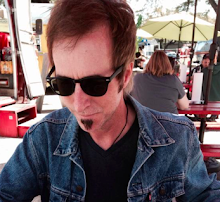Like Matters Now
But, Facebook like does matter. Over 200 million users sign-in to their Facebook accounts everyday. You can expect that many of them will launch a search while there. So, a strategy of your own to integrate the Open Graph and to take advantage of Facebook's social plugins will benefit you. Facebook likes (as well as Twitter posts) are in some ways the “links” and “keywords” of our day. I expect to see their impact made more manifest in all search but search on the home field (Facebook itself) is a great proving ground.
Some will argue and perhaps rightly so that no matter how much information Facebook is able to give users it will always be limited, and will not be able to deliver the web in the way Google can. But isn’t that why Facebook supplements its own search with Bing results. Who knows? Maybe the real winner in all of this search shift will be Microsoft's Bing. That’s a post for another day.
Bottom line: like matters NOW even if only to the prospects and customers who are looking for your products and services while on Facebook. And, that happens to be about 400 million of the best connected people in the world. So whether it completely changes the shape of search or not, like is already relevant -- even if only to those who begin their search on Facebook.
ToyStory and Your Brand
An anxious Woody says, “Look I just need to get out of here.” Buttercup responds, “There is no way out!” Woody stares back at him in horror. Buttercup (laughing) says, “Just kidding. Door’s right over there.” That’s when it hit me. It’s not the CGI that makes the ToyStory franchise work. It’s the credible story telling, compelling characters, and great audience experience. And, that’s the essence of any great brand.
When the ToyStory franchise launched the buzz (sorry Mr. Lightyear) was all about the technology. The computer animation that brought the characters to life on the big screen was the first of its kind. But we’ve seen all of that now. CGI is everywhere. The franchise has been sustained by entertaining plots and endearing characters. And, there are some lessons in their success that serve all brand owners. Here’s a few:
The Characters – how does your organization connect with a diverse audience? At Bigfish, we strive to develop personal messages (some call them key messages) that support the brand idea but connect with individuals. I for example am a Woody fan. He’s more nerdy than cool and can at times be impulsive but his core values are never in doubt – be a friend.
The Story -- your prospects and customers don’t engage a logo they embrace an idea. That idea evolves into an experience. The experience is the manner by which your brand connects with its audience. It’s the way your story becomes their story. And when your story is their story, you have a brand advocate (see my Advocates v. Followers blog).
The Plot – in the movie ToyStory3, Andy has grown up and is moving to college. He is about to determine the fate of the toys. They decide to take matters into their own hands. Can they? Likewise, your customer wants to participate. They have a stake in how their experience with you “turns out”. So, you have to ask yourself, “Where is my brand headed and is that a journey that my customer will take with me?”
Visual Effects – lest I be misunderstood, the visuals do matter. They have to align with the story. But be careful not to patronize your real audience in developing your visual identity. Case in point: Bigfish is developing a new brand and marketing communications strategy for a group of pediatric physicians. Great folks. During the discovery process our competitive research found countless websites featuring primary colors, building blocks, and stick figure kids on playgrounds. Time-out. The kids aren’t using the websites. The parents are. My point, don’t confuse story illustrations with your brand.
You get the idea. Effects are a platform. Stories create context. Plots relate your message content. Characters are the manifestation of your ideas. Each helps connect your brand with its audience.
You’ve got a friend in me, @timbigfish on Twitter or on Facebook at www.facebook.com/timcnicholson
Fans are Valuable. Advocates are Priceless.
The study: Syncapse surveyed 4,000 fans of 20 of the top brands (i.e. Nike, Starbucks, Coca-Cola) on Facebook. Then they estimated the value of each fan’s spending as well as the value of continuing to have that fan as a customer over time. The result? Each fan is worth $140. That’s a lot coffee if you’re Starbucks. It may even be a conservative estimate for highly successful social brands. Of course it seems logical that fans would buy and would continue to buy stuff. However, I propose that their value is less about their “spend” and more about their “recommend”.
The same survey found that four-out-of-ten fans would recommend a product that they fan to their friends. I'll call the "recommenders" advocates. Now, if we use Syncapse’s $140 fan-value that makes the advocate worth potentially much more. I’m not a mathematician but here’s my formula:
- Average number of friends per Facebook user: 150
- Average number of friends fans recommend to: 60
- Multiply friend recommendation by Syncapse’s valuation: $8,400
That’s before considering the value of new customers who become fans, who may subsequently become advocates that recommend your brand. Wow! Priceless (sorry, MasterCard).
Your next assignment: find and/or create advocates. It will be easy to find some. They’re the ones retweeting your posts or liking your comments. The others? Well, that requires a strategy and it’s worth more than I can charge here (smile).
Let’s talk www.twitter.com/timbigfish or www.facebook.com/timcnicholson
